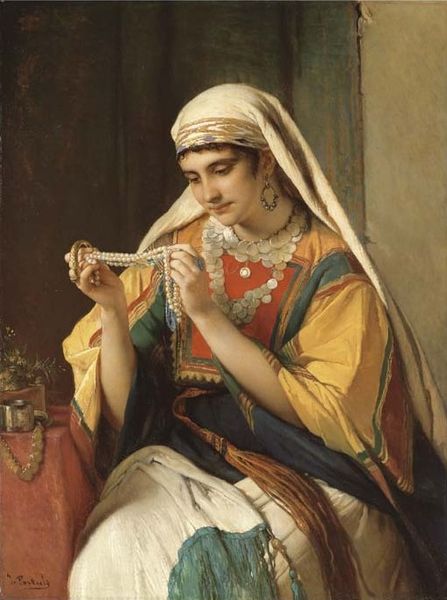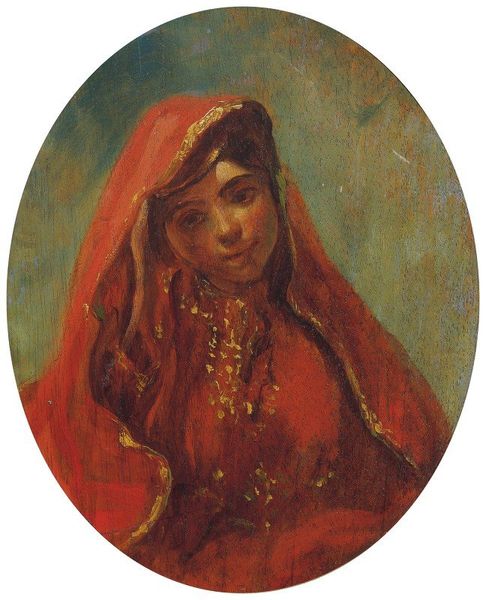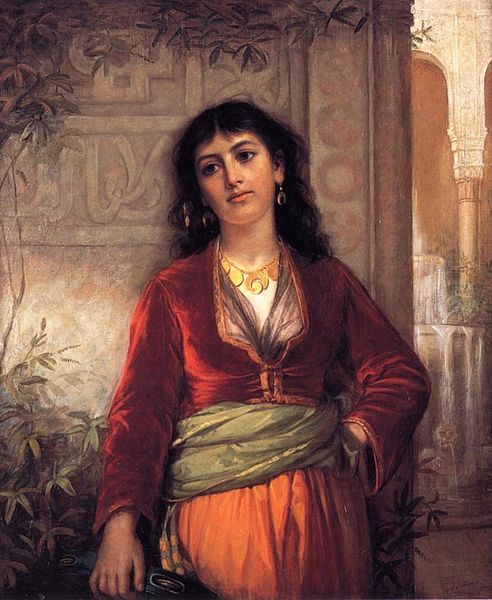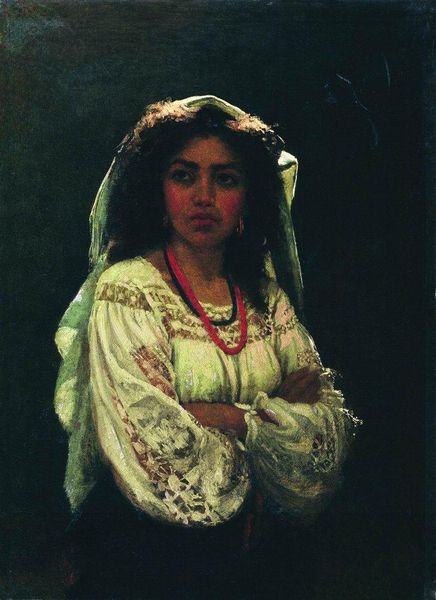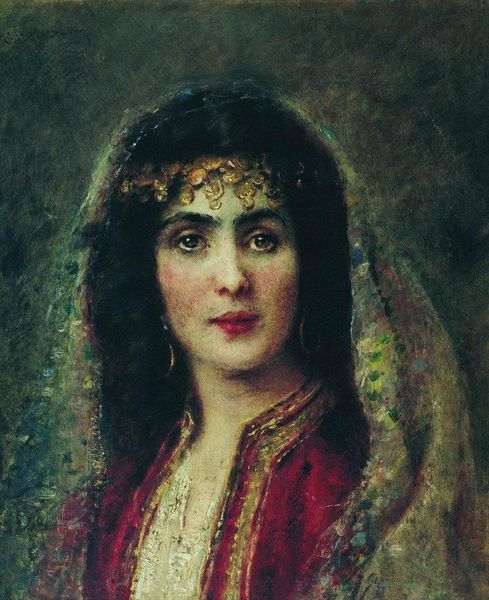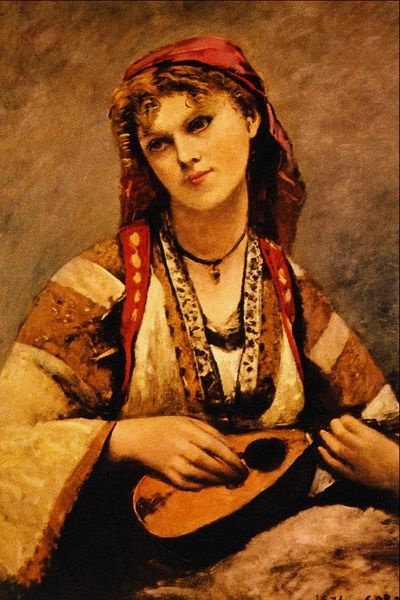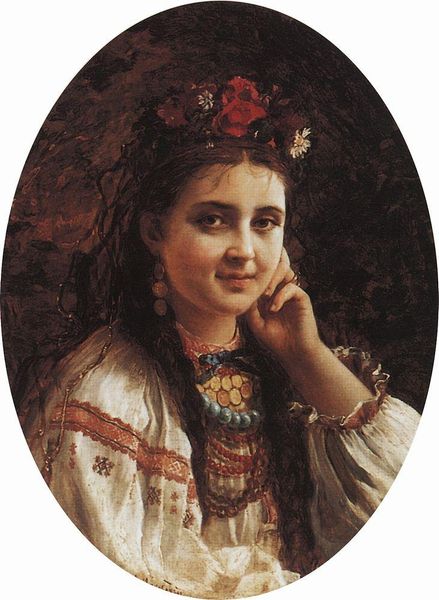
Copyright: Public domain
Curator: Here we have Konstantin Makovsky’s "Eastern Woman (Gipsy)," painted in 1878. It's an oil painting, rendered in that lush, late Romantic style. Editor: It has an immediate captivating presence! Her gaze is quite direct, almost confrontational, and the overall palette, although muted, lends itself to a rather sensual aesthetic. I'm drawn to the layering of fabrics and ornate jewellery. Curator: The work definitely embodies Orientalist themes prevalent during the late 19th century. It raises questions about how Western artists were representing “the other," you see. It's essential to think about it critically. To what degree is Makovsky romanticizing, and perhaps even exoticizing, this woman's identity for a European audience? The title itself, "(Gipsy)," also perpetuates a certain generalization of eastern identity, right? Editor: Absolutely. We need to confront the problematic power dynamics inherent in these depictions. While the aesthetic is alluring, we must recognize the historical context that perpetuates stereotypes. The woman is depicted with tattoos, elaborate jewelry, and the tambourine. Her clothing could be construed to be a sort of spectacle intended to gratify European tastes. The male gaze here is implicit, but we have to deconstruct this representation to expose embedded preconceptions of the “Eastern woman" through this Western perspective. Curator: Exactly. Even the very act of "capturing" her image within this pictorial framework highlights that gaze. And you made me think: what does "eastern" mean in 1878 when colonial projects have redefined territories, ethnicities and cultural specificities. The very category of "Eastern woman" could be a way of denying this woman a precise cultural belonging, to instrumentalize the figure to reinforce Russia's project of its own civilization. Editor: Ultimately, by grappling with these complexities, we can dismantle the layers of projection, engaging in more ethical dialogues on art that invite recognition, empowerment and inclusivity. This invites visitors to do their own deconstruction to address their roles and potential biases to appreciate cultural encounters and foster nuanced, complex empathy. Curator: Right. By examining its context and implications, we can develop a richer understanding of its social role and public imagery within the canvas and beyond it. Thank you for your attention to this painting!
Comments
No comments
Be the first to comment and join the conversation on the ultimate creative platform.






